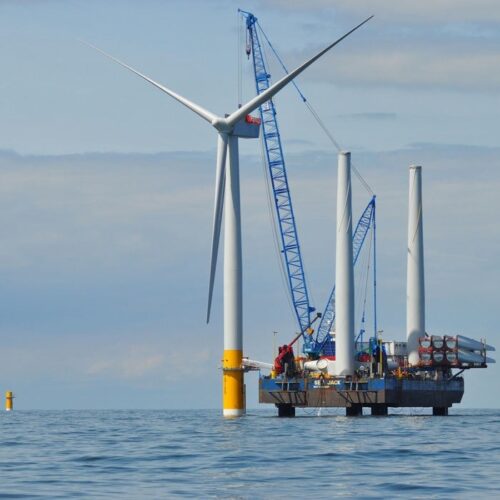Offshore wind: All at sea?
How old Treasury rules threaten the UK’s booming offshore wind industry
Last updated:
The turbines churning off the coast have made Britain a world leader in wind power generation. The UK had the world’s largest fleet of offshore turbines until 2021, and is now second only to China. Wind supplies more than a quarter of the UK’s electricity needs.
In 2022, 90% of new global offshore wind was built in China and the UK, with these two countries expected to be ahead until at least 2030.
Up until now, the Government’s Contracts for Difference (CfD) scheme has been vital in helping British wind power drive down costs. The contracts provide generators with the certainty of a pre-agreed ‘strike price’ for their electricity so reducing the cost of financing and shielding bill payers from the volatility of the wholesale electricity market which has seen prices soar during the gas crisis.
The policy has been very effective, cutting costs over the last decade by 75-80%, so much so that the Government last year chose to increase the frequency of the CfD auctions to be annual. During the worst of the gas price crisis caused by Russia’s war on Ukraine, low-cost renewable power and high energy prices meant CfD windfarms were paying back. Over the course of 18 months, during the worst of the gas price crisis from October 2021 to April 2023, CfD windfarms were expected to pay back £660 million, as contracted ‘strike prices’ were lower than the wholesale price for electricity.
New cheaper windfarms could pay back even more, especially as wholesale prices are forecast to be above renewable strike prices for the foreseeable future. The wholesale price of energy is largely set by gas power stations and therefore the price of gas. The new economic reality is that customers are vanishingly unlikely to have to make net payments in any year to these new CfD renewables projects, and instead the money will flow from renewables to customers.
But the Government has missed opportunities to move faster. The Levy Control Framework is designed to limit spending on low-carbon power, which is paid for with a ‘green levy’ on bills. But it has essentially capped the capacity of power generation that can be secured at CfD auctions. And this is at the expense of the new economic reality, which is that renewables, by displacing gas power, save money for consumers.
Treasury rules mean last year’s CfD auction, allocation round 4 (AR4), contracted 1GW less than it could have. This would have been worth up to £225million in savings each year, under forecast wholesale prices of £100/MWh.
Recognising that this year’s auction (AR5) comes alongside developers facing higher supply chain costs caused in part by inflation as a result of the gas crisis and supply chain bottle necks, the Government has upped AR5’s budget from £170 million (£30m lower than the previous round’s pot) to £190 million. However industry say this eleventh-hour move will make only a very limited impact on any new wind farm capacity secured and if the Government wanted to maximise bids at auction, the budget could even be upped, or the constraint removed entirely.
Even with costs increasing by up to 40%, as reported by industry, and higher interest rates, strike prices rising 20% to around £60MWh would still be a third lower than wholesale prices and half the cost of power from Hinkley C. The risk is that wind farms, despite them generating electricity cheaper than the predicted wholesale price and so saving bill payers money, will not get built if strike prices have been set too low by the Government not taking account of the new cost pressures. This would be a huge setback when Britain aims to generate 50GW from wind by 2030.
Even with the cost increases, projects secured in AR5 could be paying back £180million a year for every GW built. AR5 could have achieved similar capacity results to AR4 – securing around a further 6.5GW of wind capacity, saving customers £1.2billion a year.
Every GW of offshore wind secured means the UK needs less, more expensive, gas for electricity generation. And just 2.7GW, the same capacity as one large windfarm, would be enough to replace the new North Sea gas licenses affected by a Labour Government’s proposed moratorium on drilling, saving up to £600 million a year.
The question hanging over future CfD auctions is can the old rules be updated to reflect the new economic reality of high wholesale prices set by gas power plants? Updating the old rules would enable the Government to secure as much capacity as possible, bringing down bills, creating job opportunities, particularly for staff leaving the declining oil and gas industry.
